New Faculty - Fall 2022
Tandon’s newest faculty bring expertise in artificial intelligence, environmental engineering, genomics, transportation systems, and more.
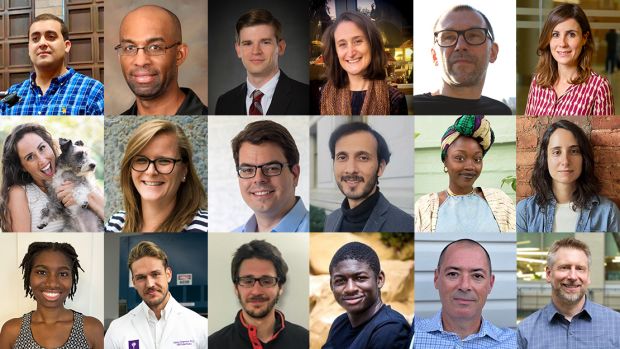
We take great pride in being a school whose faculty has included such luminaries as Herman Mark, known as the “Father of Polymer Science,” and Ernst Weber, who did pioneering work with microwaves. We take equal pride in our newest faculty members, who are making notable strides in a wide variety of areas and are poised to contribute to the Tandon legacy in their own ways.
- Amine Mohamed Aboussalah
- Joshua Bennett
- Jabril Bensedrine
- André J. Butler
- Irene de Lázaro
- Rebecca Delker
- Graham Dove
- Magdalena Fuentes
- Nikita Grigoryev
- Kaitlyn Hanley
- Sven Haverkamp
- Tracy Jo Ingram
- Michael Krone
- Daniel Vignon
- Eugene Vinitsky
- Omar Wani
- Nialah Wilson-Small
- Mukhtara Ayọtẹjú Adékúnbi Yusuf
Amine Mohamed Aboussalah
Finance and Risk Engineering
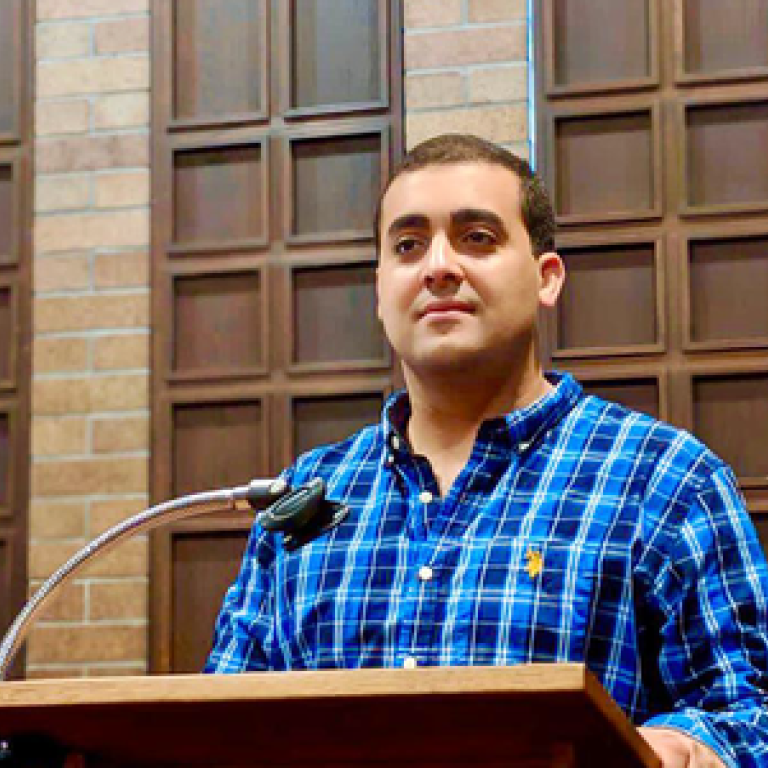 Amine Mohamed Aboussalah, a new assistant professor in Tandon’s Department of Finance and Risk Engineering, has lived all over the world, studying and working in Morocco, France, and Canada, among other locales. Somewhat shy, he adapted to new places and cultures by making friends on the soccer field. He became so skilled at the game that he was ultimately signed to a semi-professional team in Montreal. “I still consider a soccer ball to be a great vector of communication,” he says.
Amine Mohamed Aboussalah, a new assistant professor in Tandon’s Department of Finance and Risk Engineering, has lived all over the world, studying and working in Morocco, France, and Canada, among other locales. Somewhat shy, he adapted to new places and cultures by making friends on the soccer field. He became so skilled at the game that he was ultimately signed to a semi-professional team in Montreal. “I still consider a soccer ball to be a great vector of communication,” he says.
His love for science rivaled his love for the game, however, and when it came time for university, he entered a joint program at the Institut Supérieur de l'Aéronautique et de l'Espace (ISAE-SUPAERO), in Toulouse, and Polytechnique Montréal, studying Engineering Physics, Aerospace Engineering, Astrophysics, and Applied Mathematics and earning dual bachelor's and master's degrees in 2013. That year he also earned a postgraduate diploma in Innovation Management from HEC Paris, where he specialized in strategies for the aerospace sector.
While still a student, he served as a research assistant at the Canadian Space Agency and became deeply interested in cosmology and the study of black holes — a topic that became the subject of his master’s thesis. He admits that some people, upon looking at his CV, question his subsequent tenure at Oncopole (the Cancer University Institute of Toulouse), but he explains the natural connection: “Both fields — cosmology and oncology — rely on imaging, and both require an understanding of radiation and its related tools,” he says.
An interest in artificial intelligence and reinforcement learning next led him to the University of Toronto, where he earned a Ph.D. in AI and Operations Research. While he would rather not define himself as strictly focused on either theory or application, preferring to engage with both, he does feel it’s important to address real-world issues. As he quickly discovered, some of the most challenging issues occur in the world of finance. “As I worked on developing new decision-making algorithms for real-world problems, I turned to financial time-series data,” he recalls. “That’s a great challenge for researchers, because it’s chaotic, ‘noisy’ data, which is a common characteristic for many real-world problems.”
Aboussalah — who has also worked with the World Bank Group and the French Alternative Energies and Atomic Energy Commission — later launched DeepAlpha, a quantitative research firm, and Maidan Analytics, a political risk consultancy, but realized that it would be fulfilling to add teaching to the mix. “My first experience in front of a classroom was as a TA, and I discovered I loved it,” he says. “There’s nothing better than helping students master difficult topics and pushing them to advance in their fields. I think all professors want their students to ultimately surpass them.”
At Tandon — a school whose stellar reputation for financial engineering and focus on entrepreneurship he admires — he’ll be helming a class on machine learning for financial engineers. “It’s the best of both worlds,” he asserts. “I’ll be creating knowledge through my research and sharing knowledge in the classroom.”
Joshua Bennett
Chemical and Biomolecular Engineering

Industry Associate Professor Joshua Bennett explains that when an aspiring chemical engineer successfully completes a Process Design course, it marks a milestone of sorts. “I think of it as the crucible in which a student becomes an actual engineer,” he says.
Bennett, a new faculty member in Tandon’s Department of Chemical and Biomolecular Engineering, is teaching Process Design as a capstone course, with each student required to design an entire chemical-manufacturing plant from the ground up — describing the reactor, anticipating any problems that might arise, determining ways to optimize the process, and the myriad other tasks that go into creating what in real life might be a multimillion-dollar facility requiring significant real estate. “They’ll get to choose what type of plant they want to work on,” Bennett says. “Some, for example, will be focused on sustainability issues and might want to explore the process of making ethanol from corn waste; others will have different priorities.”
Bennett himself has always thought big. “By the time I got to high school, I was interested in chemistry, thanks in some part to my father, who worked at Dow for decades, but I didn’t want to spend so much time in the lab, focusing on narrow issues,” he recalls. “I realized that when a process needed to be scaled up, it was necessary to engineer a large-scale solution.”
Set on a chemical-engineering path that would allow him to work on the big projects he envisioned, he entered Texas A&M University, where he earned his undergraduate degree. “When I think of those years, I think of a classmate who once told me, ‘I used to think I was good at math and science, but then I took my first engineering class,’” Bennett recalls. Still, he persevered, earning a Ph.D. in Chemical Engineering from the University of Notre Dame and going on to posts as a lecturer at Rice University; head advisor in the Department of Chemical and Biomolecular Engineering at the University of Illinois, Urbana-Champaign, where he also taught Process Design; and lab director in the Department of Chemical and Biomolecular Engineering at Clarkson University.
After living in Texas, Indiana, Illinois, and Upstate New York, Bennett, an avid bike rider, is looking forward to exploring Brooklyn — and to helping forge the next generation of Tandon engineers.
Jabril Bensedrine
Technology Management and Innovation
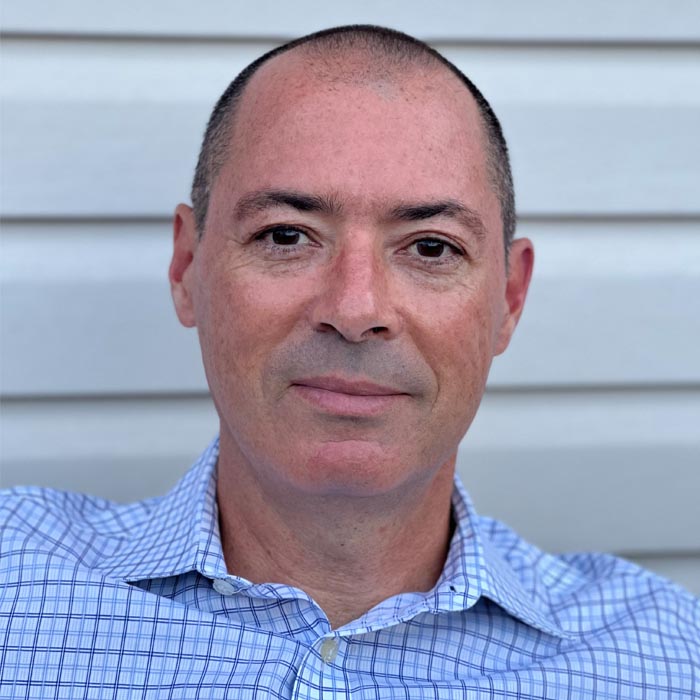
It was more than a decade ago that Jabril Bensedrine taught his first class at NYU Tandon as an adjunct instructor — a capstone course in entrepreneurship and innovation that did not meet until 8:30 in the evening. “It was a good fit for me because I was working full-time as a business consultant, and most of my students were out in the work world as well,” he recalls of those late nights.
Now a new Industry Associate Professor in Tandon’s Department of Technology Management and Innovation, Bensedrine is providing aspiring technology management professionals with an overview of the many skills they’ll need to master by graduation — everything from user-need analysis to business model development for technologies ranging from robotics to AI and much more.
Bensedrine himself is not a computer scientist or engineer — he studied entrepreneurship and business strategy at the University of Paris-Dauphine and at the ESSEC Graduate School of Business in Paris before completing his post-doctoral work at the University of California at Berkeley. But he has learned by working with some of the most innovative companies in the world on such technologies as IoT sensors, machine vision, and collaborative robotics, with clients in sectors ranging from healthcare to advanced manufacturing.
“To give one example, I was honored to have worked for years with a leading scientist on Magnetic Resonance Imaging whose inventions are now included in MRI machines worldwide,” Bensedrine explains. “While assisting his business development strategy, I gained a fascination for brain imaging for clinical and pharmaceutical R&D, and more generally for the emerging field of neuroscience.”
He wants his students to be able to learn in that same immediate, active way. “The lecture is just one item in our toolbox,” he says. “It helps mobilize discussion and spark ideas, but students learn best when they’re involved in hands-on projects.” That philosophy evidently works: some of his former students are so successful that Bensedrine invites them back as guest speakers to share their expertise and give his class a look at the career possibilities open to them.
His own career, as managing director and CEO of the Triana Group, also serves as an inspiration. “I’m happy to give my students the benefit of everything I’ve learned out in the business world,” he says. “Isn’t that really the definition of ‘industry professor?’
André J. Butler
Civil and Urban Engineering
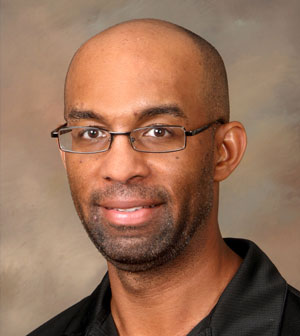 André J. Butler points out that air pollution kills some 7 million people each year, with the vast majority of those deaths occurring in the world’s poorest nations because of a variety of factors, including lax governmental regulations; proximity to rubbish dumps; and the use of indoor fires, which generate copious amounts of particulate matter, for preparing meals and heating the home.
André J. Butler points out that air pollution kills some 7 million people each year, with the vast majority of those deaths occurring in the world’s poorest nations because of a variety of factors, including lax governmental regulations; proximity to rubbish dumps; and the use of indoor fires, which generate copious amounts of particulate matter, for preparing meals and heating the home.
Butler, a new Industry Professor in Tandon’s Department of Civil and Urban Engineering, has conducted air-quality research in the Dominican Republic that revealed concentrations of pollutants hundreds of times higher than U.S. Environmental Protection Agency standards, and he hopes to impress upon his students the importance of mitigating the problem. “We all need to breathe,” he says, “no matter where we live.”
With poor air quality causing a plethora of respiratory illnesses and other health problems, it’s not just an engineering challenge but a social justice issue.
It was, in an indirect way, a social initiative that brought Butler to NYU Tandon from Mercer University, in Macon, Georgia, where he served variously as an associate professor of environmental, civil, and mechanical engineering and a department chair. His wife, Taifa Smith Butler, was offered the chance to head Demos, a New York City-based nonprofit organization dedicated to democratic reform, voting rights, and economic justice. “We’re excited to be relocating to a new region of the country we haven’t yet explored,” he says, “and we’re looking forward to doing fulfilling new work.”
Butler — who holds a Ph.D. in Environmental Engineering from the Georgia Institute of Technology and has worked with the U.S. Environmental Protection Agency’s Division of Air, Pesticides and Toxics Management — is also looking forward to furthering environmental engineering as a field of study for Tandon undergraduates. “Decent air quality, safe drinking water, effective waste management, the health and wellbeing of every living thing on the planet . . . it all depends in some part on environmental engineers,” he says.
Irene de Lázaro
Biomedical Engineering

The human heart contains more than two billion cardiac muscle cells. While that may sound like a lot, when they become irreparably damaged, they don’t get replaced. Someone who suffers a heart attack, for example, will not grow new cells to replace those that die.
New Assistant Professor of Biomedical Engineering Irene de Lázaro explains that’s because shortly after a human infant is born, most of their cardiac muscle cells lose the ability to divide and reproduce. “Unlike skin, which heals easily when it’s damaged,” she says, “the heart cannot regenerate itself.”
It was while earning her M.Sc. in Drug Delivery at University College London’s School of Pharmacy that de Lázaro first became interested in the topic of tissue regeneration. “I heard about researchers in Japan who had recently studied a group of genes that are highly expressed in the embryonic stages but not later,” she recalls. “They discovered that if you forced expression at a later stage, you could actually make an adult cell behave like an embryonic stem cell, with its ability to divide and also to re-differentiate again into virtually any cell type of the body.”
De Lázaro, who also holds a Pharm.D. in Pharmacy from Spain’s University of Alcalá, decided to remain at University College London to study for a Ph.D. in Regenerative Medicine and work with a research group dedicated to pioneering in vivo cellular reprogramming. (The Japanese group had worked only in vitro.) “We can control how much to reprogram a cell,” she says, “whether that’s all the way back to an embryonic stage or simply to a somewhat earlier stage in which they’re rejuvenated and behave as a younger cell would.”
It may sound to the layperson as though scientists had discovered a veritable fountain of youth or developed the ability to build fully functioning human organs in the lab, but de Lázaro cautions that the work is still in its basic, foundational stages. “We’re investigating the mechanisms by which in vivo reprogrammed cells contribute to regeneration; studying the impact of mechanical and biochemical controlled perturbations on cell plasticity and reprogramming; and engineering reprogramming factor delivery vectors that will allow for efficient, safe, and clinically translatable reprogramming,” she says.
She’s looking forward to continuing her research at Tandon, as well as to advancing her outreach and community-building efforts. (She has participated in and led several such initiatives, including as Chair of the Gordon Research Seminar in Tissue Repair and Regeneration; co-founder of the Society of Spanish Researchers in the UK; and organizer of the Topics in Bioengineering Seminar Series at Harvard University, where she served as a Research Associate in Bioengineering at the John A. Paulson School of Engineering and Applied Sciences and the Wyss Institute for Biologically Inspired Engineering.)
She is also excited about teaching a course in Tissue Engineering to Tandon graduate students. “This will open doors for them to either continue their academic research careers or go on to work in the biotechnology industry,” she says. “They could be the ones who are one day regenerating or building entire working organs in their labs.”
Rebecca Delker
Chemical and Biomolecular Engineering
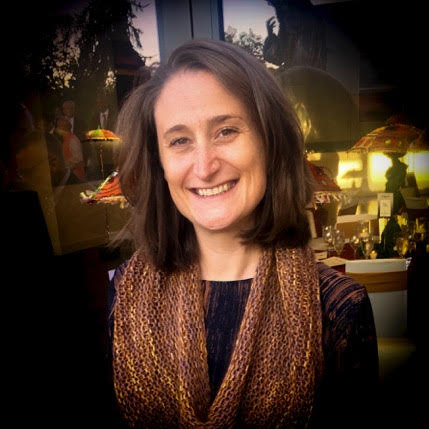 Industry Assistant Professor of Chemical and Biomolecular Engineering Rebecca Delker still remembers the first time she took a course and the professor drew from his own primary data rather than relying on what had been published in the textbook. “It was so exciting,” she recalls. “I felt that I was getting a window into the scientific process; I was seeing how what was in the textbooks got there.”
Industry Assistant Professor of Chemical and Biomolecular Engineering Rebecca Delker still remembers the first time she took a course and the professor drew from his own primary data rather than relying on what had been published in the textbook. “It was so exciting,” she recalls. “I felt that I was getting a window into the scientific process; I was seeing how what was in the textbooks got there.”
When that same biochemistry professor offered her a research position, she fell further in love with the topic. “I was learning up-close how cells function,” she recalls. “It seemed like a miracle that a group of molecules could do all this.
After earning a B.S. with honors in Biochemistry and Chemistry from the University of California, San Diego, she went on to receive a Ph.D. in Biological Sciences with a concentration in Molecular Immunology from The Rockefeller University, where she was a graduate fellow in the Laboratory of Lymphocyte Biology.
She hopes to provide her students with “a-ha” moments like the one she experienced as an undergraduate. “My goal is to get them to think critically about data and to understand how the information they read in their textbooks came to be there in the first place,” she says. “Science education is a fine balance between providing students with the results of past research — the facts in their textbooks — and an understanding of the process of science itself. Emphasis on the latter can be empowering: no longer are the contents of science simply something you have to learn, but something you can participate in too. “
The central question in much of Delker’s own research involves genome regulation — in other words how genes get turned on and off. She explains that because the downstream effects of faulty gene expression can cause a variety of diseases, understanding the process can help researchers create effective treatments.
Beyond the lab bench, however, she is deeply interested in science communication, and her non-academic writing is often focused at the interface of science and society. She has explored topics as far-ranging as the ramifications of the millions of tons of plastic waste the bioscience research community generates annually, the ethical dilemmas posed by animal-based studies, and the enormous impact of CRISPR technology.
“I enjoy existing in the idea space, and I want my students to be comfortable there too” she says. “I hope they get curious about how we know what we know.”
Graham Dove
Technology Management and Innovation
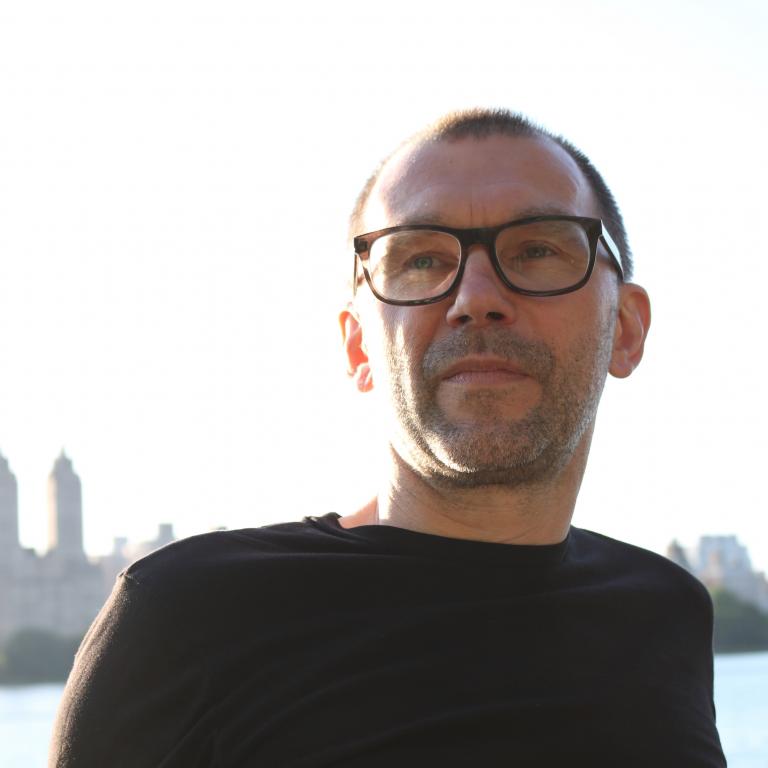
Graham Dove is already a familiar face in Tandon’s Department of Technology Management and Innovation. Formerly a Research Assistant Professor, he has taken on the new mantle of Industry Assistant Professor, but his focus and guiding principles remain the same. “I want my students to come away from my classes with a deep understanding of how important people are to anything they design or build,” he says. “It doesn’t matter whether it involves customers, staff, or other stakeholders or whether you’re working in the realm of healthcare, public service, banking, or anything else — people must be at the center of the process.”
Dove’s work takes user-centered and participatory approaches to designing and understanding data-enabled products, services, and artifacts (such as smart energy monitors, fitness trackers, or medical wearables) and human engagement with machine-learning. It thus merges human-computer interaction with design and creativity studies, data visualization and data science, and citizen science and informal learning. Forging a path to such a multi-faceted, bridge-building career began for Dove back at the University of Sussex School of Cognitive and Computing Sciences, where he earned a B.A. with honors in Artificial Intelligence. He notes that contrary to how we typically view AI today, it was a bachelor of arts degree, rather than of science. “The program contained elements of philosophy, developmental psychology, and creative computing,” he recalls. “I hadn’t seen anything exactly like it before or since.”
Dove — who is also a faculty member of Tandon’s Center for Urban Science and Progress, where he has worked on projects like Sounds of New York City (SONYC), which monitors noise pollution with remote sensors — went on to earn an M.Sc. in Human-Centered Systems from the Centre for Human-Computer Interaction Design at City University London, and a Ph.D. in Human-Computer Interaction from that school’s Centre for Creativity in Professional Practice.
He hopes that his Tandon students will use what they learn from him to follow their own fulfilling paths. “Understanding human-computer interaction and its ramifications is useful for product managers, user experience designers, service providers, and aspiring entrepreneurs seeking the best ways to implement their ideas, to name just a few,” Dove, who also serves as the faculty advisor of the NYU chapter of Design for America (DFA), says. “We read constantly about the misuse of tech, from people becoming addicted to their screens to intrusive digital surveillance, but it can also be enriching and liberating if it’s created in a way that puts people first.”
Nikita Grigoryev
Chemical and Biomolecular Engineering
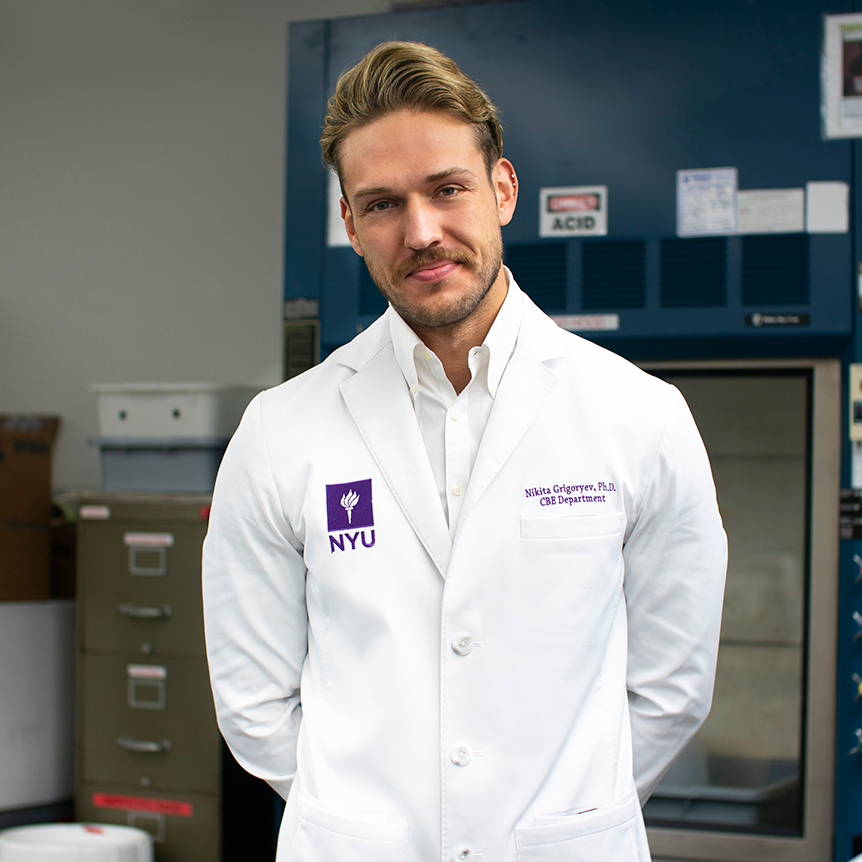 Industry Assistant Professor of Chemical and Biomolecular Engineering Nikita Grigoryev is not just a faculty member, he’s also an NYU Tandon alum, graduating summa cum laude with a B.S. in Biomolecular Science, earning a master’s degree in Biomedical Engineering, and receiving his Ph.D., also in Biomedical Engineering, here.
Industry Assistant Professor of Chemical and Biomolecular Engineering Nikita Grigoryev is not just a faculty member, he’s also an NYU Tandon alum, graduating summa cum laude with a B.S. in Biomolecular Science, earning a master’s degree in Biomedical Engineering, and receiving his Ph.D., also in Biomedical Engineering, here.
During the course of his graduate studies, Grigoryev met Research Professor Kalle Levon, an expert in biomaterials who was instrumental in the launch of Tandon’s degree programs in biomedical engineering, biomedical sciences, and bioinformatics. Invited to join Levon’s lab, he became immersed in the study of glioblastoma, the deadliest form of brain cancer. Glioblastoma tumors can be excised, but the aggressive cells that escape the scalpel end up killing the vast majority of patients within five years of diagnosis. Previously, there was no effective way to study the spread of glioblastoma cells; in vivo experiments involving live animals came with a set of ethical dilemmas, and the brains of mice do not, at any rate, exactly mimic those of humans.
Grigoryev began working on engineering an artificial scaffolding that would enable cells from glioblastoma patients to grow in the lab to be studied. The process of building such scaffolding — for which he and Levon now hold a patent — consists of electrospun nanofibers that are embedded in a clear hydrogel, closely mimicking the cells’ natural environment. Because the hydrogel is transparent, researchers can easily distinguish between the original cells and the newly grown cells, tracking them and studying their gene amplification.
“I’ve always loved every aspect of biology, from horticulture to metagenomics,” Grigoryev says. “And once I got to NYU, I discovered how my interest could be leveraged to solve intractable clinical problems. It’s very gratifying to think about the patients who might be helped by our work one day.”
Grigoryev — who attended primary school in Russia, high school in Switzerland, and lived in Italy for several years before coming to New York — would like to ignite a similar interest in his students. “I taught my first class back in 2016 and loved it,” he says. “I eventually developed my own course, Introduction to Biomaterials in Tissue Engineering, and I’ve taken part in Tandon’s Undergraduate Summer Research Program, guiding students in developing in-vitro mouse model of a genetic disease using CRISPR as well as sequencing genes to identify and study microbiomes from various environmental samples.”
Students, he asserts, are now tackling more ambitious and complex projects than ever before. “They really have to,” he says. “Take a gene-editing technology like CRISPR. It didn’t even exist not that long ago but now it’s something that every geneticist should know about.”
Kaitlyn Hanley
Civil and Urban Engineering
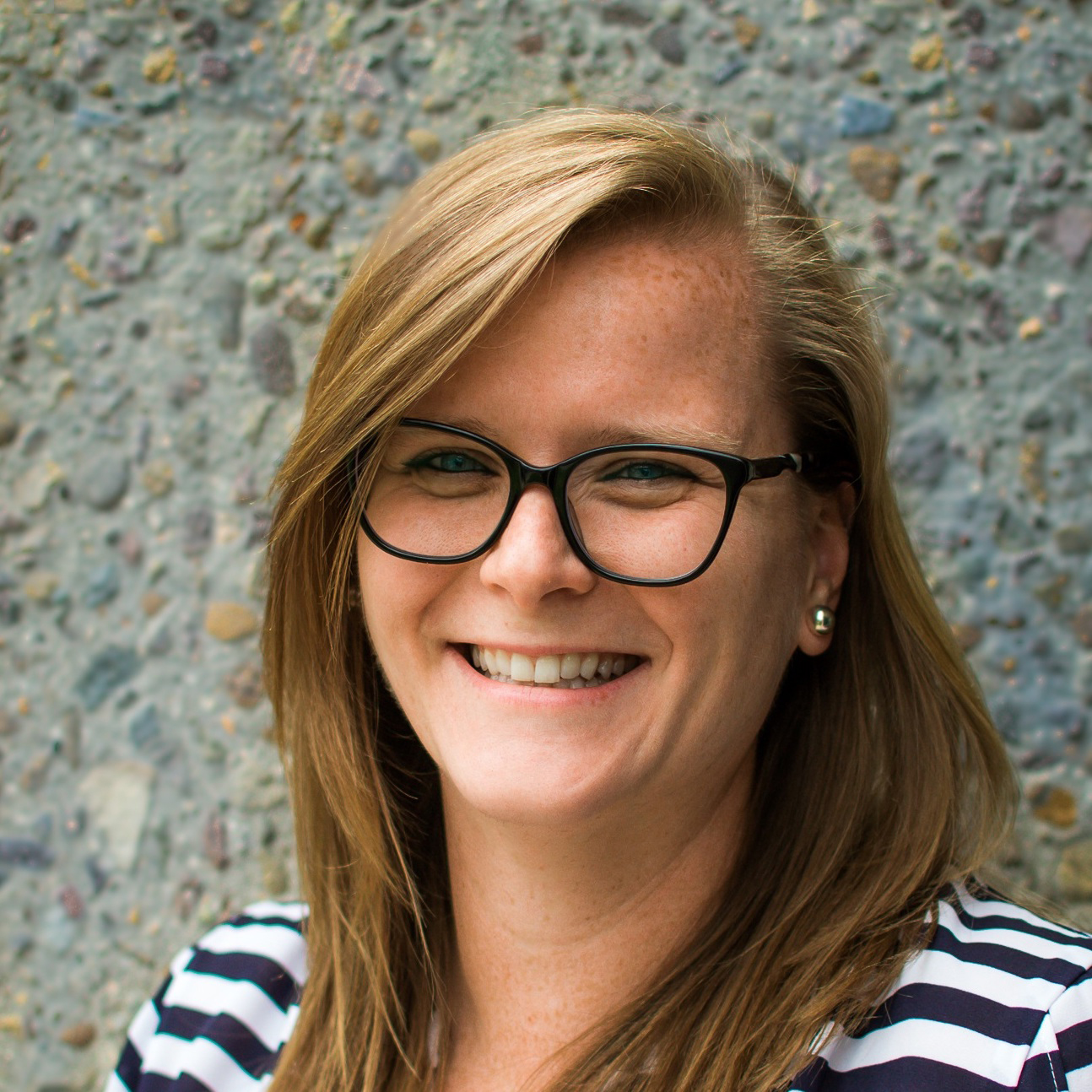
Walk down a city street and you may not give the environment the same thought as you would during a trek through a forested area or a stroll on the beach. Industry Associate Professor of Civil and Urban Engineering Kaitlyn Hanley thinks that's somewhat shortsighted. “The environment does not always refer to hiking in the woods. It is all around us, all the time,” she says. “Urban spaces face a range of environmental issues — and pose opportunities — that environmental engineers of the future must be poised to tackle.” She explains, for example, that the shopkeeper hosing off the pavement may be discharging pollutants into the nearby storm drain, traffic congestion at red lights brings on an onslaught of air pollution and smog, and high industrial activity can result in contaminated soil and groundwater.
Hanley understands the lack of attention, however: she grew up in Brooklyn and admits that her view was also once narrow. “As a child, I was not in tune with the interconnectedness between this dynamic city and the environment,” she recalls. “I was, however, interested in the great outdoors and human health. Once I began college, I started realizing that public health is inextricably linked with issues like water and air quality, and they coalesce in the discipline of environmental engineering.”
Hanley went on to earn bachelor’s degrees in environmental engineering and earth science at Cornell University, and master’s and doctoral degrees in environmental engineering from the University of California, Davis. As a graduate researcher, she became fascinated with microbiology and the nexus of water quality and food safety. Her areas of expertise now include microbial source tracking, waterborne pathogens, and aquaculture quality. (Her Ph.D. dissertation was titled “Human Noroviruses in the Coastal Environment: Association with Aquatic Macroaggregates and the Risk of Infection by Raw Shellfish Consumption.”)
Now back in Brooklyn, Hanley is on a mission to bring environmental awareness to an urban setting. As a new member of the department of Civil and Urban Engineering, she’ll be teaching a sophomore-level course in environmental chemistry and microbiology, as well as a junior-level lab class that will give students a hands-on introduction to the environmental engineering concepts of pH, coagulation, flocculation, and other elements of water treatment. This latter course leverages Hanley’s previous professional experience as the manager of a state-of-the-art molecular laboratory that analyzed water samples for microbial source tracking markers.
She’ll also be working to develop and expand Tandon’s environmental engineering program, collaborating with colleagues Andrea Silverman, Anne Ronan, and André Butler, all of whom have extensive expertise in water systems and environmental quality.
“I returned home to Brooklyn at the start of the pandemic, and as anyone who has ever loved this borough will understand, the decision to remain was an easy one,” she says. “I am also thrilled to join the Tandon faculty, helping to train a new generation of environmental engineers who will transform the world’s cities to be healthier, more liveable, and more sustainable.”
Sven Haverkamp
Mechanical and Aerospace Engineering
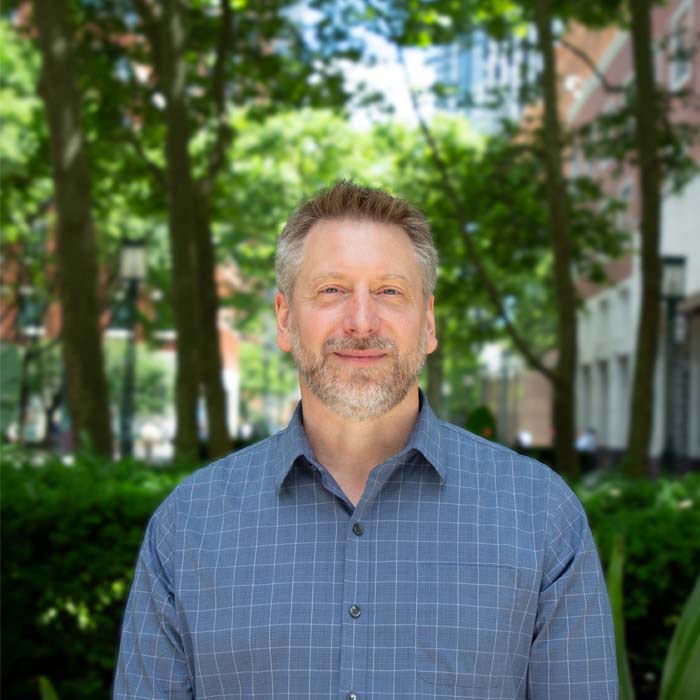
Sven Haverkamp, a Visiting Associate Professor in NYU Tandon’s Department of Mechanical and Aerospace Engineering, recalls that in his youth he did not have the hobbies of many aspiring Mechanical and Aerospace engineers. “There was no fleet of miniature airplanes hanging from the ceiling of my childhood bedroom,” he says. “But I did have a deep curiosity about the way things worked and a love for science and math.”
Haverkamp’s curiosity led him to earn both his master’s and doctoral degrees in aerospace engineering at Germany’s RWTH Aachen University and to study as an exchange student at the Technion, in Israel. Like many mechanical and aerospace engineers in Germany, he began his career in that country’s thriving automotive industry, accounting for the aerodynamic development of some popular Volkswagen cars.
While at Volkswagen, Haverkamp became fascinated by the processes and methods used to develop complex products and ultimately began working as a consultant. “What I loved most about it was the teaching element,” he recalls. “When you’re advising someone on how best to develop their products, you are, in effect, expanding their base of knowledge and teaching them new skills.”
When his wife’s new job as a librarian at the United Nations necessitated a move to the United States, the time seemed perfect to make a move back into academia. Since 2019, Haverkamp has taught a variety of courses — including Engineering Design and Problem Solving, Advanced Thermodynamics, Automotive Engineering Fundamentals, and Aircraft Engineering Fundamentals – at the Cooper Union for the Advancement of Science and Art, where he has also made a name for himself as a dedicated advisor, overseeing numerous capstone projects and preparing students for such events as the SAE AeroConnect Challenge, the SAE Formula racecar competition, and NASA’s Revolutionary Aerospace Systems Concepts — Academic Linkages (RASC-AL) initiative.
He's looking forward to working on similarly exciting projects while visiting at Tandon. Because why build a model vehicle that can hang from the ceiling when you could be working on one that can actually drive or fly.
Tracy Jo Ingram
Center for Urban Science and Progress (CUSP)
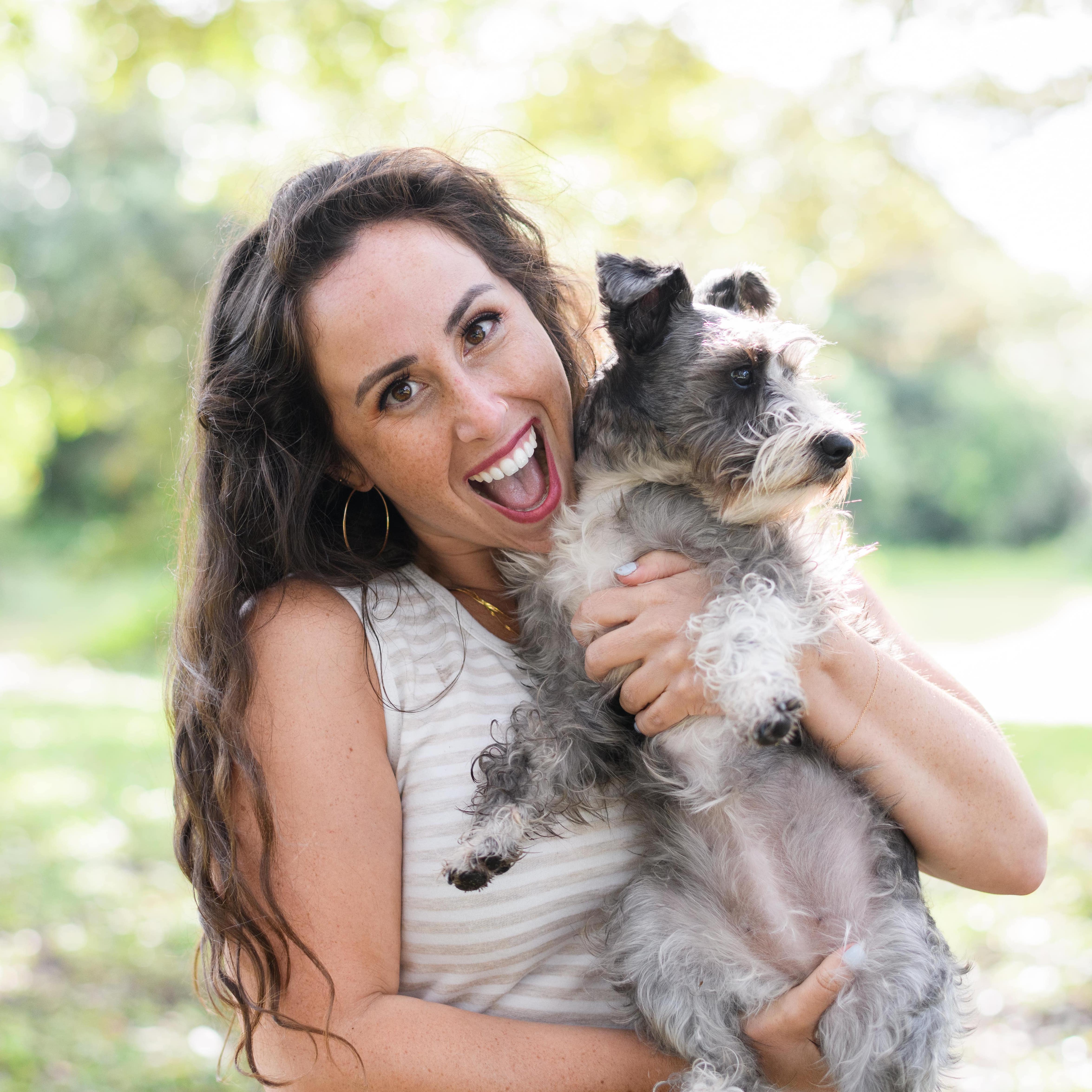
NYU Tandon’s Center for Urban Science and Progress (CUSP) uses New York City as a living laboratory and classroom. If you relied on stereotypes, you might not think its mission — to develop novel data and technology-driven solutions for complex urban problems such as crime and environmental pollution — would resonate with someone whose roots are deeply embedded in the Bluegrass State of Kentucky.
In the case of Visiting Assistant Professor Tracy Jo Ingram, you’d be completely wrong. Consider, first of all, that Ingram grew up not amongst the rolling hills and horse farms that come to mind for many people when Kentucky is mentioned, but in the South End of Louisville, a diverse area that is home to many low-income families.
A first-generation student at Western Kentucky University, Ingram served with AmeriCorps in San Francisco after graduating. Subsequently, she returned to her beloved Commonwealth as the Program Director and Director of Social Responsibility for the Kentucky YMCA Youth Association, the nation’s largest Youth and Government program and an organization she knew well from her own formative years. While she loved interacting with teens, she gradually realized that it might be more effective to drive institutional and systemic change by working in city or state government. That realization led her to NYU Wagner as a Dean’s Scholar, and in 2019 she earned a Master’s Degree in Public Administration with a specialization in Public and Non-Profit Management and Policy.
That same year Ingram became an adjunct professor at NYU Wagner, and two years later, she began working as a course assistant and adjunct at CUSP under the leadership of Dr. Neil Kleiman, which cemented her passion for working with data and technology to enhance the efficiency and equitability of urban policy.
With stints under her belt as a policy and research fellow for the Greater Louisville Project (during which she helped prepare a statistical review of the city’s racial and geographic progress) and as an associate for an advanced city management project between NYU Wagner and the New York City Department of Citywide Administrative Services (which involved analyzing opportunities to close the city’s enormous gap in procurement spending for Minority and Women-Owned Business Enterprises), teaching at CUSP seemed a natural fit.
“The Center is working to ensure that students who have data science skills can leverage those capabilities to make needed social change,” she says. “I want to be a part of that; I’d like to serve as a support system for them so that once they graduate from CUSP they can soar professionally, solving our generation’s most pressing policy questions.”
Ingram is particularly excited about the possibility of guiding first-generation students like herself and others who might need extra guidance in gaining the confidence to interact with policymakers and government officials. “First-generation college students often don’t have the access and resources to know how to navigate a new world that can feel unwelcoming; that also applies to international students who may be learning to communicate their ideas in English,” she explains. “It takes a lot of wherewithal and strength to undertake a demanding academic program like that at CUSP, and I’m looking forward to helping our scholars meet their goals. Students come here because they want to learn practical ways to make a difference in their communities, which is the very same desire that sent me on my own path."
Michael Krone
Computer Science and Engineering

It’s helpful to think of data visualization in terms of two overarching categories, Michael Krone, a Visiting Assistant Professor in Tandon’s Department of Computer Science and Engineering, explains: in one category are visualizations that represent physical objects like medical scans or molecules, and in the other are more abstract collections of information, such as gene expression, price fluctuations, or heart rates. He cautions that no matter what phenomenon or item a data scientist is visualizing — or how visually compelling the resulting on-screen representation is — it’s important to remember that these are not simply pretty pictures. This involves not only choosing the right visualization for the data, but also developing novel visualization methods. “My job is to make the data both visible and easy to understand,” Krone says. “I want the domain experts with whom I’m working to be able to see trends and patterns and to extract the greatest insight possible from the data they’ve worked to gather.”
Collaborating with experts in other disciplines is among the most gratifying parts of his work, Krone says, since helping them effectively visualize and analyze their data provides a fascinating window into new and different worlds. “I have spent much of my time working in the life sciences, and I’ve gotten to create visualizations of everything from DNA sequences and drug interactions to the synthesis of biofuels,” he says.
Much of that work was conducted while Krone was at the University of Stuttgart, in Germany, where he earned his undergraduate degree in computer science, remained to complete his doctoral studies at the school’s Visualization Research Center, wrote a thesis titled “Interactive Visual Analysis of Biomolecular Simulations,” and embarked on a two-year post-doctoral period. “My goal was ultimately to improve the visual analysis of simulation data so that researchers could better study how molecular systems work,” he explains. “That’s foundational; if you understand that, it opens the door to improving drug design and patient care, making new discoveries in materials science, and so much more.”
Now a junior professor at the University of Tübingen, where he heads the Big Data Visual Analytics in Life Sciences research group, Krone is scheduled to arrive in Brooklyn this fall. “My classes will touch upon different topics that are fundamental to data visualization and visual analytics, including computer graphics, human-computer interaction, visual design, and computer science,” Krone says, “and my students will be able to leverage their new knowledge to turn daunting datasets into practical, actionable insights.”
Magdalena Fuentes
Technology, Culture and Society
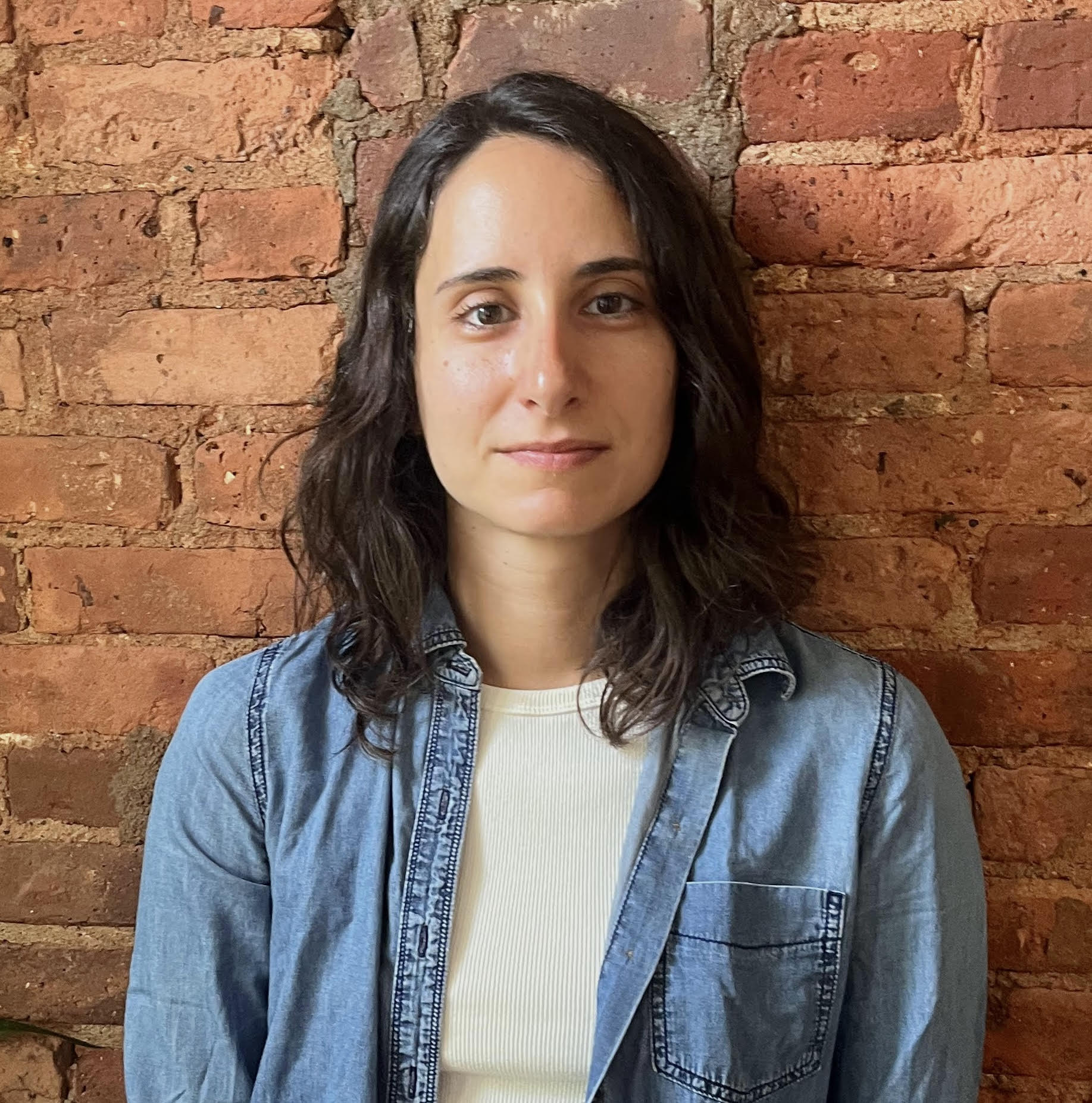 Magdalena Fuentes’s road to NYU started with a cello. An enthusiastic musician who played with various groups in her native Uruguay, early on she became interested in signal processing — a branch of electrical engineering that models and analyzes data representations of physical phenomena like sound waves and that she realized would allow her to engage with her art on an entirely new level.
Magdalena Fuentes’s road to NYU started with a cello. An enthusiastic musician who played with various groups in her native Uruguay, early on she became interested in signal processing — a branch of electrical engineering that models and analyzes data representations of physical phenomena like sound waves and that she realized would allow her to engage with her art on an entirely new level.
After earning her bachelor’s degree in electrical engineering from Uruguay’s Universidad de la República, where she also served as a research and teaching assistant at both the engineering and music schools, Fuentes moved to France and completed her Ph.D. studies at Université Paris Saclay, working on multi-scale computational rhythm analysis, with a focus on the interaction of microtiming (small-scale temporal deviations), beats, downbeats and music structure. She next came to the U.S., becoming a post-doctoral fellow jointly attached to Steinhardt’s Music and Audio Research Lab (MARL) and Tandon’s Center for Urban Science + Progress (CUSP).
The choice to apply her skills to examining urban settings was a natural one. Fuentes dived into working from an audio-visual perspective, as visual and acoustic information complement each other: video helps researchers identify objects and understand their motion, and audio advances an understanding of the presence of relevant out-of-sight sounding objects, as well as helping solve occlusions and improve estimations with poor lighting. The interaction of images and audio has countless applications from public health to entertainment.
Music constitutes an integral part of urban soundscapes, Fuentes explains, and in order to make sense of those soundscapes, machine listening models should be able to detect and classify street music. Yet, the lack of well-curated resources for training and evaluating the models currently hinders their development. To mitigate that situation Fuentes helped compile the Music of New York City Dataset (MONYC), a large open dataset of music clips recorded by the sensors already deployed by CUSP researchers studying noise pollution. By collecting data on where and when the music was being picked up by sensors, whether it was live or recorded, loud or quiet, and the product of one or many instruments, Fuentes hoped to shed light on how music manifests itself in a real-world setting, among social interactions in an urban context.
Now that her fellowship is complete, Fuentes divides her time as an assistant professor between Steinhardt’s Department of Music and Performing Arts Professions and Tandon’s Integrated Design and Media (IDM) program, where her hands-on, project-oriented course on deep learning for media is in the planning stages. Her students, she hopes, will gain a solid foundation in how to frame a machine-learning problem and will ultimately generate their own content using audiovisual data.
“I want them to look at their work from a very human-focused perspective,” she says. “It’s valuable to understand how listeners interact with music and audio, how they move to it, how they react emotionally to it, and how accessible it is to them.”
Companies like Spotify and Google use research like Fuentes’s to improve their recommendation algorithms, but she explains that she is also interested in advancing the study of music from an ethnographic point of view. (She has published papers exploring the use of deep learning to track beats and microtiming in Afro-Latin American music, for example, and the use of automatic onset detection techniques — ways to mark the instant in which a note begins — to analyze microtiming in the Brazilian musical genre of Maracatu de Baque Solto.)
As for her own music, she still plays the cello, although just at home for her own enjoyment, rather than as part of any organized ensemble. For now, teaching and research are taking center stage.
Daniel Vignon
Civil and Urban Engineering
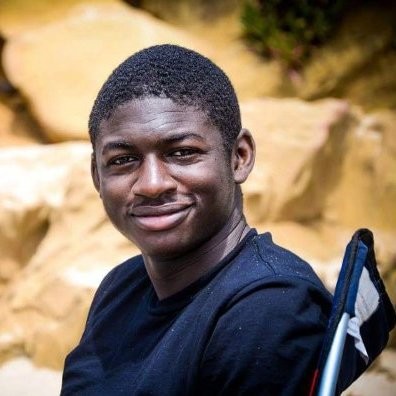 Assistant Professor of Civil and Urban Engineering Daniel Vignon has a firm grasp on what companies like Tesla and GM spend to make increasingly autonomous vehicles. But while he admits that smart cars are exciting, he has a question for their CEOs: what about smart infrastructure? “The technology exists to deploy cameras and Light Detection and Ranging (LiDAR) equipment at intersections, making them much safer,” he says, “and there are companies working on embedding sensors directly into roadways that could communicate vital information to drivers. But those types of things will take investment and will.”
Assistant Professor of Civil and Urban Engineering Daniel Vignon has a firm grasp on what companies like Tesla and GM spend to make increasingly autonomous vehicles. But while he admits that smart cars are exciting, he has a question for their CEOs: what about smart infrastructure? “The technology exists to deploy cameras and Light Detection and Ranging (LiDAR) equipment at intersections, making them much safer,” he says, “and there are companies working on embedding sensors directly into roadways that could communicate vital information to drivers. But those types of things will take investment and will.”
Among Vignon’s areas of expertise is evaluating the monitoring and safety costs of such initiatives. “While completing my B.S. in Mechanical Engineering from MIT, I realized I wasn’t interested in ‘making things’; I wanted to build mathematical models that would explain how those things work,” he says. Once he had that epiphany, he went on to earn an M.A. in Economics and a Ph.D. in Civil and Environmental Engineering from the University of Michigan, Ann Arbor, conducting his research in the school’s Laboratory for Innovative Mobility Systems (LIMOS).
As a boy, Vignon — a native of the Ivory Coast — had dreamt of coming to the U.S., but those dreams generally involved playing pro basketball rather than entering academia. That had changed by the time he reached college age and was sponsored by his uncle to study in America.
“There are so many transportation-related issues to explore here,” Vignon — who has spent a summer teaching at African Leadership University (ALU) in Mauritius and conducted research at Electricite de France (EDF) in Paris — says. “How can we eliminate unfair competition among private car services without imposing overly zealous regulatory burdens? Once we build a transportation system, what can we do to ensure its success?” His research into these types of questions can be found in such respected peer-reviewed journals as Transportation Research Part C and has also been presented at conferences such as INFORMS and the TRB Annual Meeting.
He’s eager to continue his work as a faculty member of C2SMART, Tandon’s Tier 1 University Transportation Center, and is looking forward to having all of New York City as a living lab. So while he might not be making an impact on a pro basketball court as he had once envisioned, he’s poised to make his mark on the transportation systems of the future.
Eugene Vinitsky
Civil and Urban Engineering
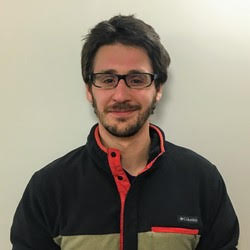 Assistant Professor Eugene Vinitsky was an avid reader of science fiction in his youth. “I found it captivating,” he recalls, “especially as compared to life in suburban Connecticut.”
Assistant Professor Eugene Vinitsky was an avid reader of science fiction in his youth. “I found it captivating,” he recalls, “especially as compared to life in suburban Connecticut.”
Although Connecticut may have been a relatively sleepy milieu, his tight-knit Russian community provided no shortage of dynamic role models, from his own parents (a biochemist and a software engineer) to neighbors with whom he would compete to solve the most math problems in a set amount of time.
Vinitsky exhibited a marked talent for math, and when he was accepted to the California Institute of Technology (Caltech), a school he had long heard about, his path seemed clear — and it led directly to advanced degrees in physics. After earning bachelor’s and master’s degrees in that discipline, however, he had a change of heart. “I had already embarked on my doctoral studies when I took a course in optimal control and realized I loved the topic,” he says.
Control, he explains, is focused on getting a dynamical system to behave as you want. “Many people use the example of a thermostat to illustrate what’s meant by control,” he says. “Assume you want to keep a room at a constant temperature of 70 degrees. Control is about keeping it at that temperature despite external factors that might make it fluctuate like the temperature outside. ”
Soon after being introduced to the topic, Vinitsky dropped out of his Caltech doctoral program in physics and entered the Mechanical Engineering Department of the University of California, Berkeley. There he was a member of the Berkeley Artificial Intelligence Research (BAIR) group, working with Professor Alexandre Bayen. He completed a thesis entitled “From Sim to Real: Learning and Deploying Autonomous Vehicle Controllers that Improve Transportation Metrics,” and earned his Ph.D. in controls in the summer of 2022.
His focus is now on reinforcement learning and the control of multiagent systems with a specifc focus on how to optimize the energy efficiency of cooperative autonomous vehicles. “Think of the advanced cruise control now available on cars,” he says. “While not yet fully autonomous, these systems can prevent drivers from swerving into another lane or stop them from colliding into the car in front of theirs. My goal is to determine how those systems should operate in an optimal way to improve things like energy efficiency, safety, or the amount of CO2 emitted by our roadways. Instead of just following the vehicle in front of us at a fixed distance, we can make different choices that do things like eliminate stop-and-go traffic or decrease congestion.”
Vinitsky, who has completed stints at Tesla, Deepmind, and Facebook AI Research, and is currently a Research Scientist at Apple, is starting in Fall of 2023 as a faculty member in Tandon’s Department of Civil and Urban Engineering and at C2SMART, Tandon’s Tier 1 University Transportation Center, which is at the forefront of using unprecedented recent advances in communication and smart technologies to address global transportation challenges.
His new post represents a welcome move back to the East Coast for him. “It’s not just that New York happens to be the greatest city in the world,” he asserts, “but NYU has a long history of being on the cutting edge of transit studies, machine learning, and other fields applicable to my work.”
Omar Wani
Civil and Urban Engineering
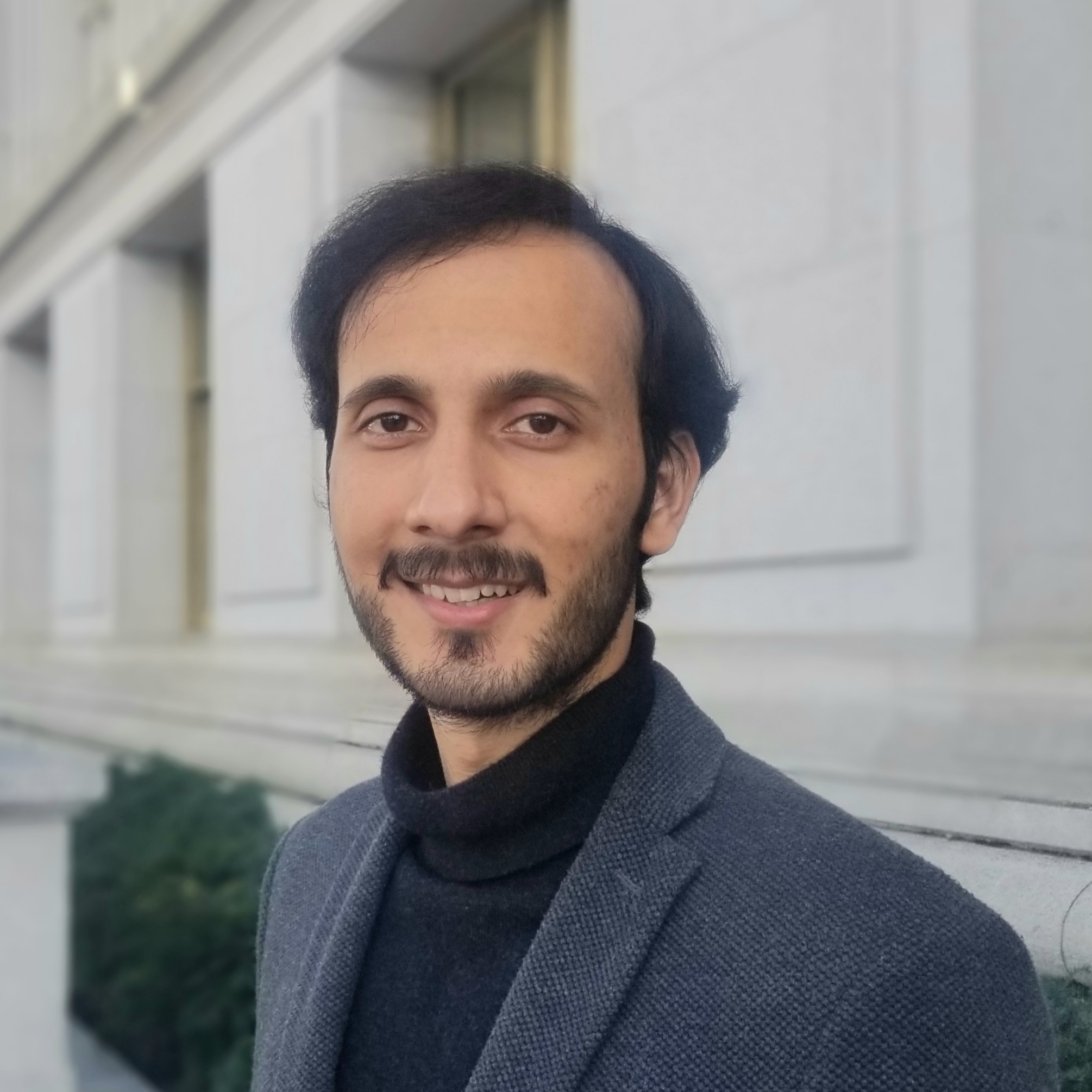 When the U.N. announced its annual World Water Day, the organization explained that while water is absolutely fundamental to all life on the planet, its management is becoming more challenging due to a growing population, increasing demands of agriculture and industry, and the worsening impacts of climate change.
When the U.N. announced its annual World Water Day, the organization explained that while water is absolutely fundamental to all life on the planet, its management is becoming more challenging due to a growing population, increasing demands of agriculture and industry, and the worsening impacts of climate change.
Omar Wani, Assistant Professor in the Department of Civil and Urban Engineering, has lived and worked all over the world and has seen first-hand the importance of managing that vital resource properly. Born in the Himalayan region, where mountainous watersheds abound, he attended the Indian Institute of Technology, in Roorkee, for an undergraduate degree in civil engineering. He later studied for a master’s at the Delft Institute for Water Education in the Netherlands, a nation continually battling against rising sea levels, and did his doctoral work in environmental engineering at ETH Zurich, in Switzerland, a land of abundant water resources thanks to its Alpine glaciers.
Wani’s research involves hydrologic systems in both urban and natural environments — with a focus on building computational models. Such models, among other uses, are indispensable for water resources management and water infrastructure design. “In environmental sciences, generally, and in hydrology, particularly, our models — our mathematical descriptions of various phenomena — are approximate,” he has written. “But, still, we have to make very important decisions based on the prediction of our models. The impact of these phenomena, let's say flooding or combined sewer overflows, is substantial.”
That impact is only going to get more severe in light of climate change, he says, so it’s vital to gain a solid quantitative understanding of the flow of water within urban and natural hydrologic systems and how changes in precipitation affect it. Such an understanding would allow scientists to build better predictive models and potentially prevent or mitigate the plausible threats caused by human-induced warming.
“Faced with increasing urban populations (projected to be twice the global rural population by 2050), shifts in precipitation patterns and rising sea levels (currently at a rate of more than three millimeters per year), there is mounting pressure on the global flood-defense infrastructure and on the adequacy of the conventional water-related risk management practices,” Wani — who conducted his postdoctoral work at the University of California Berkeley's Environmental Systems Dynamics Lab and the California Institute of Technology’s Division of Geological and Planetary Sciences — has written.
At Tandon, Wani is part of a large group of faculty members spanning multiple disciplines who are focused on predicting the impacts of climate change — from global to urban scales. “We need to develop flood early warning systems, provide accurate flood-risk zoning maps, engage in effective risk communication and start preparing effective emergency response mechanisms,” he has written. “And in some cases, we will have to adapt and live with floods.”
Wani, whose honors include fellowships from the Swiss National Science Foundation and the European Commission, is teaching a class in urban hydrological systems and developing a course that will delve into the type of advanced statistical modeling needed to make important water-management decisions in the face of uncertainty and the vagaries of climate change. “Models, even the approximate ones, play the role of well-formulated arguments in the process of robust decision-making,” he asserts.
Nialah Wilson-Small
Mechanical and Aerospace Engineering
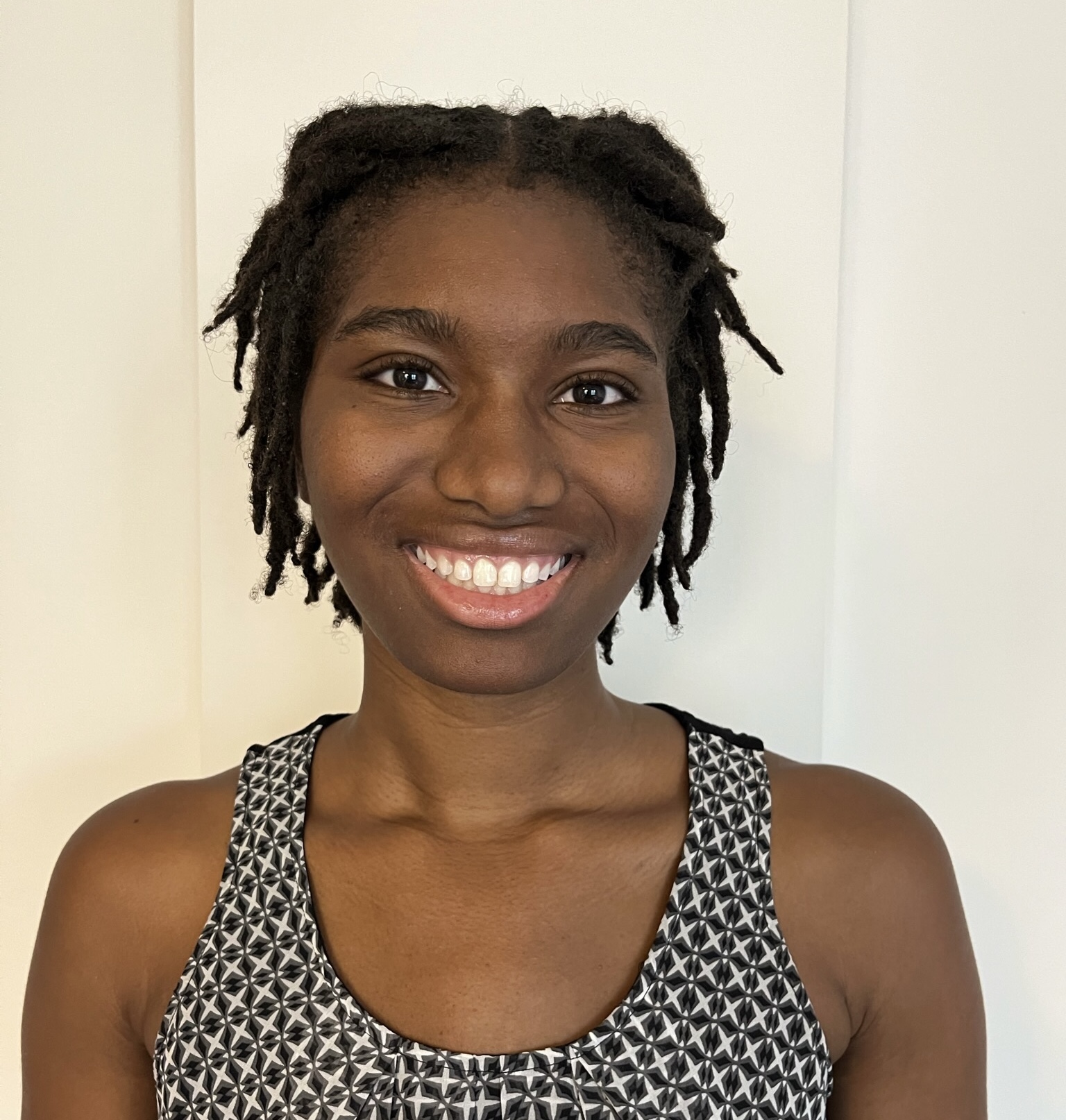 Industry Assistant Professor of Mechanical and Aerospace Engineering Dr. Nialah Wilson-Small is capable of explaining her work to even the least knowledgeable layperson. That’s not only because she’s a skilled communicator — adept at working with everyone from K12 students to high-level researchers — but because she can draw upon the example of a popular cartoon robot. “If you’ve seen the Disney film Big Hero 6, you’ll probably remember the swarm of micro-robots the protagonist has created,” she says. “My research involves developing ways to allow swarms like that to coordinate effectively and safely with each other. Additionally, I study how autonomous drones can better coordinate with humans.”
Industry Assistant Professor of Mechanical and Aerospace Engineering Dr. Nialah Wilson-Small is capable of explaining her work to even the least knowledgeable layperson. That’s not only because she’s a skilled communicator — adept at working with everyone from K12 students to high-level researchers — but because she can draw upon the example of a popular cartoon robot. “If you’ve seen the Disney film Big Hero 6, you’ll probably remember the swarm of micro-robots the protagonist has created,” she says. “My research involves developing ways to allow swarms like that to coordinate effectively and safely with each other. Additionally, I study how autonomous drones can better coordinate with humans.”
Wilson-Small had initially become interested in robotics when her Virginia middle school won a grant that allowed it to launch a FIRST Lego League program. “I had always been a child who liked to take things apart and sketch out inventions, so I was very excited about the chance to get hands-on STEM experience in the League,” she recalls. “I found robots, in particular, to be fascinating, because of the world of possibilities they presented and their potential to improve life for humans.”
She remembered that sense of excitement when she arrived at Howard University to study mechanical engineering. “My father is an alum of Howard, and it felt important to me to attend an HBCU [Historically Black College/University], but there was really no organized robotics outreach there,” she says. “The solution was to get together with a group of friends, draft the legislation to officially launch the Howard University Robotics Organization, create modules to teach students about basic robotics principles, and organize competitions reminiscent of the FIRST Lego League. Part of what drew me to NYU Tandon, in fact, was its longtime commitment to K12 education and the opportunity to be a role model to students in groups traditionally underrepresented in STEM.”
In mid-2022 Wilson-Small became more of a role model than she might ever have imagined: that’s when she defended her thesis and became the first Black woman in Cornell history to earn a doctoral degree in Aerospace Engineering there.
“I wouldn’t be where I am today without the people I met along the way,” she asserts, “from the Congressional Black Caucus Foundation members who deemed me an emerging leader to the Howard University professors who suggested I apply for an internship at Sandia National Laboratories. From the dedicated Sandia researchers who showed me what my career could be like if I pursued a doctoral degree to everyone I’ve worked with at Cornell’s Collective Embodied Intelligence Lab and Enhancing Ability Lab.”
At Tandon, Wilson-Small be teaching graduate mechatronics and an undergraduate introduction to mechanical engineering, and she’s looking forward to introducing her students to the world of possibilities that sparked her own imagination back in middle school. “Drone technology is being applied now in search and rescue operations, crowd control, fire safety, and so many other important areas,” she says. “As human-robot interaction and communication improves, there will be many more. I want my students to know that studying mechanical engineering and robotics can really enable them to make a difference in the world.”
Mukhtara Ayọtẹjú Adékúnbi Yusuf
Technology, Culture, and Society
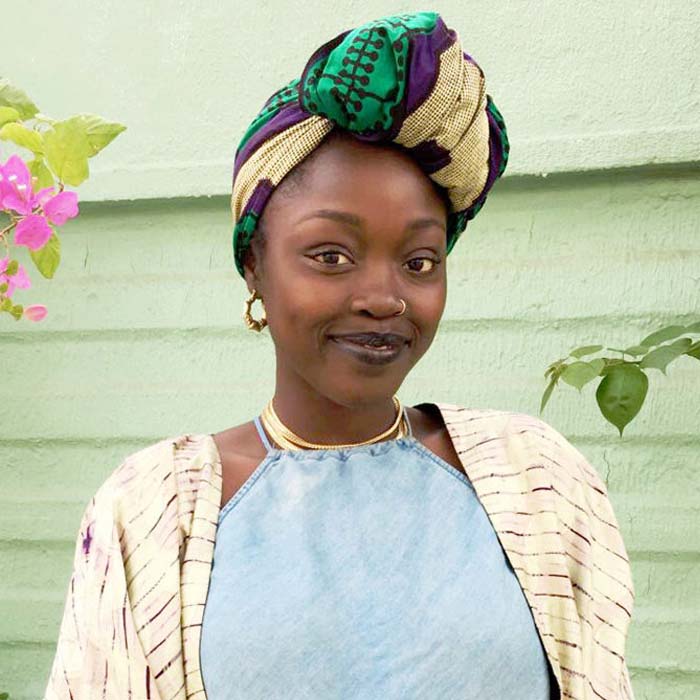
When Mukhtara Ayọtẹjú Adékúnbi Yusuf was an undergraduate at Dartmouth, they approached the career counselor with a creative idea; a fervent activist even as a teen, they wanted to do something that would allow them to examine art from a trauma-informed perspective.
“My mother was an outspoken advocate for social justice, and I followed in her footsteps,” Yusuf recalls. “I was also very active in various community arts projects, and it seemed natural to combine those interests once I got to university.” When the white, cisgender male counselor discouraged them — asserting that such ideas had little utility in the real world — they pursued a double modified major in African and African American Studies and Sociology and completed a thesis entitled “Fela! On Broadway: Representations of Africans in American Pop Culture,” using the Broadway musical based on the life of the late Nigerian singer Fela Kuti as a jumping-off point to discuss colonialization, fashion, and identity performance.
“I was lucky to be a part of the Mellon Mays Undergraduate Fellowship,” Yusuf says, “and through that I received invaluable mentorship. One faculty member in particular, Michelle R. Warren, showed me I had a mind for research. Suddenly, I saw a path forward.”
Yusuf — whose path later included an M.A. in Communications from the University of California, San Diego, and an MFA in Design with a concentration in Architecture from the University of Texas, Austin — wants to be a similar force for their own students. Even before coming to NYU Tandon as a Visiting Assistant Professor in the Department of Technology, Culture, and Society this semester, they succeeded on that score, serving as an external advisor to master’s student Wanda Nyairo, who was working on her Integrated Design & Media thesis on black women mental health and wearable technology.
“That came about because I stumbled upon the work of Tandon professor Ahmed Ansari on Twitter while he was defending his dissertation. I was grateful and affirmed finding another scholar from the Global South who was taking a critical and epistemological look at design and decolonization. He became a colleague and encourage Wanda to attend an online lecture I gave in 2020,” Yusuf explains. “It’s wonderful to make connections like that because sometimes working at the intersections of various identities can be isolating — you start to think that you’re the only one.”
Having been in ableist, anti-black, and xenophobic spaces at times during their academic career, Yusuf — who recently worked with the Portland, Oregon-based housing nonprofit Human Solutions (now Our Just Future) as its Equitable Design Coordinator — stresses that among the most important things they want their students to know is this: “The idea that objectivity should be the ultimate goal in academia stems from a colonialist mindset that sees the West as the authority on all things. It is fine for your work to be openly subjective. All work is subjective, all work chooses sides and is based in political opinion, even science research: it is brave and more honest to be open with this than hide behind the illusion of objectivity. My own research emerges from my subjectivity as a Yoruba person and the trauma that stems from neoliberal realities in my country. I came to decolonization work because I needed to in order to heal. Ultimately, I want our work as designers and creators, especially Black designers and creators, to be humanizing for us.”

